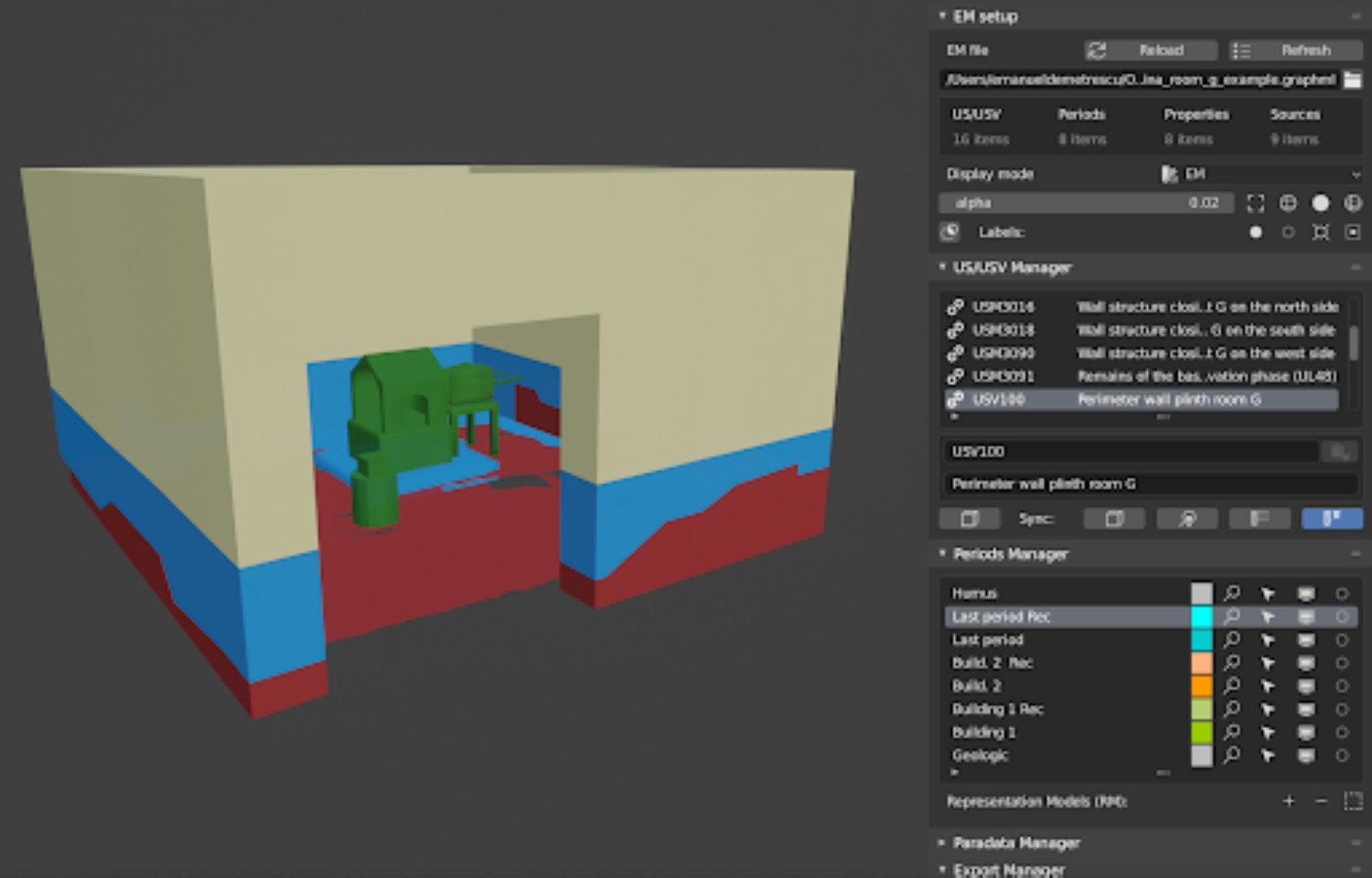ArcheoFOSS 2020
The use of 3D tools to improve the transformation of the archaeological record into a virtual reconstruction: EMtools and EMviq open source software
Emanuel Demetrescu
Emanuel Demetrescu, Emanuel Demetrescu, PhD, is a researcher at the Institute of Heritage Sciences - National Research Council. He is a python developer, UAV pilot, specialist in Digital Archaeology, Building Archaeology, 3D source-based modeling (virtual reconstructions) and reality-based (creation of digital replicas). His main research concerns the creation of theoretical and methodological links between scientific documentation in Cultural Heritage and creative industries (3D digital libraries, virtual museums, Open World games and VR experiences).
Bruno Fanini
Bruno Fanini, Computer scientist, PhD - focuses his research and development on real-time 3D graphics, Virtual Reality, interaction design and 3D user interfaces at the Institute for Heritage Sciences of the National Research Council (CNR ISPC). He obtained his master of science degree in Computer Science at Bologna University and PhD at Sapienza University (Rome, Italy). He focuses his activities on server-side services, responsive Web3D front-ends and their deployment. He developed several software tools, serious games, web-applications and web services within national and international projects. He is responsible for different projects dealing with interactive 3D visualization, WebXR applications, interaction models and immersive VR through Head-mounted displays. He’s involved as coordinator of one unit under SHINE DigiLab (E-RIHS).
Archaeology revolves around a few questions: what was man like, his life and his places over the centuries? Digital archaeology and virtual reconstructions offer concrete tools to take contemporary man back in time and “visit” the places he came from: his past. A real time machine built over 200 years, from splendid painted reconstructions to immersive virtual reality and open world video games.
In recent years the interest of the scientific community in virtual reconstructive hypotheses (the visualization of a context as it must have appeared at a given time in antiquity) has grown. A central aspect in the development of scientifically correct virtual reconstructive hypotheses is the possibility to manage and publish not only the visual result of the reconstruction but also all the data used to obtain it and in particular the sources, reasoning and interpretations. This type of activity, however, requires complex cross-references of data, even very different from each other (written sources, photographs, photogrammetric 3D models, stylistic comparisons, etc.). In order to achieve this goal, therefore, it is necessary both a theoretical framework and a series of innovative computer tools that can simplify, standardize and make efficient the workflow that leads from the archaeological data to the reconstructive hypothesis: this is the focus of this article.
The proposed innovative tools are based on the Extended Matrix (EM), a formal language able to manage both the archaeological record and to annotate the reconstructive hypotheses that emerged from the early stages of the investigation. In other words, within the EM approach, it is possible to transform the stratigraphic archaeological record into formalized reconstructive hypotheses about how a context must have appeared at a given time in the past. The 3D tools are part of the Extended Matrix Framework: the Extended Matrix tools (EMtools - https://github.com/zalmoxes-laran/EM-blender-tools) and Extended Matrix Visual Inspector and Querier (EMviq - https://github.com/phoenixbf/emviq).
The software mentioned are just ones of the possible practical applications of the Extended Matrix methodology. Thus, the development of these tools followed a bottom-up approach and started from real problems that emerged during the development of some case studies as reported by archaeologists and 3D modelers involved. The software have been released under an open source GPL 3.0 license in order to be used by the scientific community and possibly modified to adapt them to their own case studies within the same methodological frame-work of the Extended Matrix (examples of custom developments currently underway are the use of EMtools for the taphonomic analysis and reconstruction). The article will shortly present examples of workflow on real case studies and technical details related to the operative aspects of the software.
